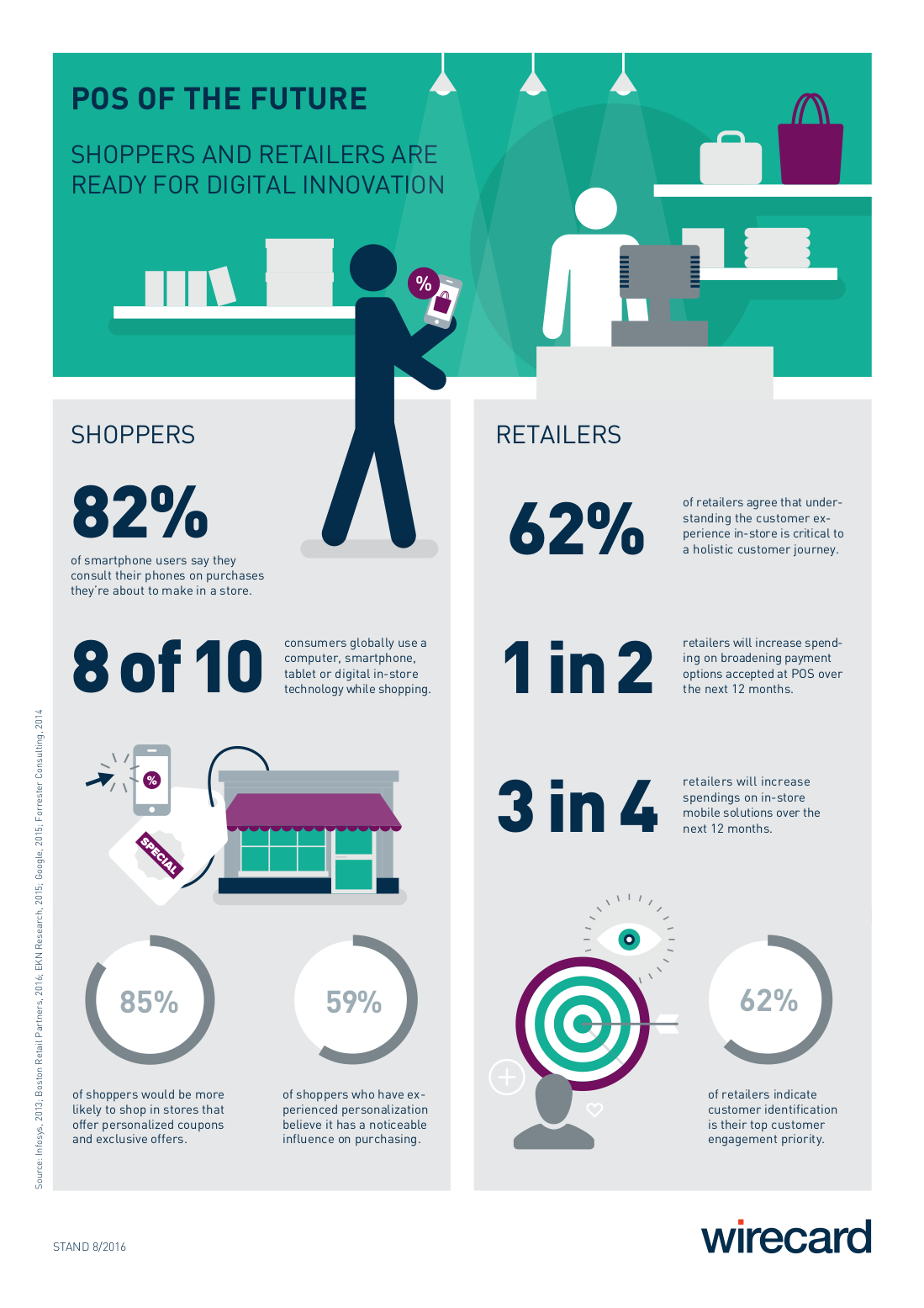Technology has transformed the way brands interact with customers.
With the proliferation of mobile devices and ever faster internet connections, people are more informed and selective than ever before. The number of mobile shoppers is on the rise and upward trajectory will continue in the foreseeable future.
Point of Sale (POS) software is right at the center of these developments.
The term refers to a virtual place where customers pay for your products and services. It can be installed in a brick-and-mortar store or online. Either way, a POS platform provides flexible options for executing purchases.

At the same time, it also does much more than that.
Full-blown POS systems enable business users to run their operations more efficiently. They serve as a central hub for handling all customer-facing transactions, but also inventory management, data gathering, and other processes. Many tasks that used to be tedious and time-consuming are now a breeze.
So, make no mistake. POS software is the beating nexus of your sales funnel, which shapes consumer behavior and boosts your profit and revenue.
Here is a functional guide that should help you understand its ins and outs.
POS Systems Now and Then
Back in the olden days, a physical Point of Sale was the only way to go.
It all started with the most rudimentary form— a cash register. Operators had to manually enter the prices and the machine would produce a receipt.
 the vintage cash register
the vintage cash register
Over time, registers were computerized and could store product databases. Barcode scanners soon came around to do away with a manual price entry.
Then, the tech revolution took place to rock the business ecosystem. Devices were quickly getting smaller, smarter, and more powerful. On-site Point of Sale software emerged as the new norm until the next leap of evolution occurred: the advent of cloud-based systems. These innovative tools opened up new possibilities owing to their ability to store data digitally.
Retail top players first recognized the potential of early adoption. They embraced solutions capable of facilitating purchases both in-store and online. Amazon Go demonstrates how cutting-edge tech can be employed to revolutionize convenience stores. But, we no longer have to engage consumers just in-person. For instance, the aforementioned cloud-based POS platforms are getting increasingly popular among online merchants and customers.
These cutting-edge tools dramatically reduce the upfront costs of implementing Point of Sale. Some of these solutions go the extra mile and handle transactions, data analysis, CRM, marketing, loyalty programs, etc.
We have come a long way from clunky and “dumb” devices to iPad cash registers and apps.
What is POS Software and What Does It Do?
In order to make an informed decision, you need to understand how POS software works.
In general, everything depends on how the system was designed. But, there are some common threads and key differences to note.
First off, all modern systems have software and hardware components. The software aspect consists of a frontend interface and a backend side (also known as a “backoffice”) for analytical and management tasks. The frontend component is responsible for recording, processing, and storing transactions.
Operators interact with it via touchscreen monitor or tablet screen. To access the back office, on the other hand, they have to launch a browser or an app on a compatible device.
As you can see, POS is not a single machine or a process. It’s a constellation of different parts that access, stockpile, and use data in two distinct ways. This reflects the existence of three main types of POS systems: on-premise, cloud-based, and hybrid.
The first is installed locally, which usually means on a desktop server. The Point of Sale software becomes part of a closed computer network and does not require the internet to run. Buyers are responsible for maintaining and updating it. This may require them to hire dedicated IT staff. Secondly, cloud-based software is hosted online, typically on POV provider’s servers. Providers also roll in updates and offer various other services. As for day-to-day managing, it is much easier than with an on-premise product. It can be performed by a single individual.
Finally, we have hybrid systems that utilize both local and online hosting. In terms of functions, they are a combination of the two previous setups.
What Are The Possibilities of POS Software?
POS systems share some general functions.
You can think of them as retail management suites because they go well beyond just processing sales.
Most of them have order processing, analytics, and inventory management features. But, it’s not uncommon to also find options for employee management, customer service, bookkeeping, stock transfers, quotations, sales reporting, etc. Furthermore, as we have indicated, modern software solutions allow you to integrate third-party platforms. These add-ons can take the form of CRM, business intelligence, warehousing, e-commerce, and other tools. They enhance the original set of features and functionalities of POS software.
In other words, you can customize and augment the software to fit your specific business needs. This kind of versatility is one of the main reasons why Point Of Sale software is making waves across industry sectors.
For example, those who want to manage memberships are able to do so via systems that automatically allocate points and issue discounts based on the purchase activity. Likewise, CRM features involve customer groups, databases, and loyalty programs. They aid your efforts on the whole customer relations front.
 Starbucks loyalty card
Starbucks loyalty card
Another thing to note is that there are both general (multi-purpose) Point of Sale systems and those geared toward a specific industry. The advantage of the latter is they address unique requirements you may face in practice. If you are a retailer, you want to have scalability, omnichannel compatibility, extensive hardware support, and robust integration.
Benefits and Advantages of POS software
POS software is a business game-changer and for more than one reason too.
First off, it streamlines operations by automating transactions. Even the most basic systems include electronic cash registers. Advanced suites add much more to your arsenal. Another major benefit is the ability to track and analyze purchase data via integrated technology.
One can assemble a whole network of data-collecting devices and programs. It generates a steady stream of vital insights and allows businesses to optimize the POS, as well as other core business areas. You gain comprehensive overview of your inventory at hand, product performance, sales summary, etc.
Some data points of interest are gross revenue, sales trends, pricing accuracy, inventory status, etc. You can pick up on problems with cash flow and react accordingly. Similarly, you successfully avoid customer service problems such as out-of-stock sales. Moving on, POS software is an essential tool for navigating the day and age we live in. Providers put a lot of emphasis on pleasing aesthetics and utmost user-friendliness. Systems are also becoming ever more sophisticated and interactive.
 source: https://www.paymenteye.com
source: https://www.paymenteye.com
They offer a customer-centric and compelling experience to a growing army of online shoppers. And this has profound implications for your prospects in the market. Modern customers are tech-savvy and they want nothing short of a highly personalized shopping journey. POS system enables you to offer just that. Therefore, it shapes the user experience and maximizes your financial performance.
What Distinguishes Makilla POS?
POS platforms are not created equal.
There is a heap of available solutions and comparing them can get quite overwhelming.
Well, we are proud to say Makilla stands out in the crowded market. It’s an all-in-one cloud-based suite that is fast and easy to use. You do not need to possess IT expertise or any coding skills to get the ball rolling.
The POS software package has a wide range of built-in functions that cover cash register, warehousing, shopping cart, CRM, and reporting. Utilizing an intuitive interface, you can distribute discounts, promotions, receipts, and gift cards to your customers nice and easy. And that is not all!
Makilla takes pride in having three products on offer: apart from POS, you can purchase B2B and e-commerce components. This allows you to manage online sales and carry out product/customer research. Any kind of retail business can capitalize on these features and supercharge operations. A combination of retail management, access to complete data, and communication features really makes your life easier.

The cloud workflow system runs in the browser and on any device that has the browser installed. This gives you much-needed flexibility when it comes to implementation. On top of that, you can count on free support for all services. Did we mention the price is more than affordable?
Indeed, Makilla seems like a no-brainer. But, you should feel free to do your research and explore other avenues. Find out the solution that is just right for you.
Take Your Business to the Next Level
POS software is integral to success in an oversaturated business landscape.
It is a great way to get in front of your customers and tailoring your sales to their wants and needs. In the process, you steer consumer behavior toward desired outcomes (purchases).
What is more, you have a chance to simplify the core aspects of daily operations and boost productivity across the board. These benefits make the POS system a clear win-win.
Start by putting together a list of must-have features. Seek solutions that champion prime usability and flexibility. Bear in mind it is also preferable to have centralized control capabilities and do everything in one place.
After factoring in all the functions, features, and capabilities, select the right tool that scales as your business grows. Once you are up and running, you will reap many benefits, such as cornucopia of data in your digital storage.
Contact us if you want to run your business like a well-oiled machine and elevate the bottom line!References:
https://www.investopedia.com/terms/p/point-of-sale.asphttps://financesonline.com/15-pos-systems-for-retail-stores-what-is-best-for-your-business/
https://www.softwareadvice.com/resources/what-is-a-point-of-sale-system/
https://www.vendhq.com/blog/how-to-use-pos-system/
https://www.shopkeep.com/blog/how-does-a-pos-system-work
https://www.mobiletransaction.org/how-pos-system-work/
http://www.makilla.com/index.php
POS software Point of sale software












3 comments
John Doe
The European languages are members of the same family. Their separate existence is a myth. For science, music, sport, etc, Europe uses the same vocabulary. The European languages are members of the same family. Their separate existence is a myth.
Mark Stone
The European languages are members of the same family. Their separate existence is a myth. For science, music, sport, etc, Europe uses the same vocabulary. The European languages are members of the same family. Their separate existence is a myth.
Andy
The European languages are members of the same family. Their separate existence is a myth. For science, music, sport, etc, Europe uses the same vocabulary. The European languages are members of the same family. Their separate existence is a myth.